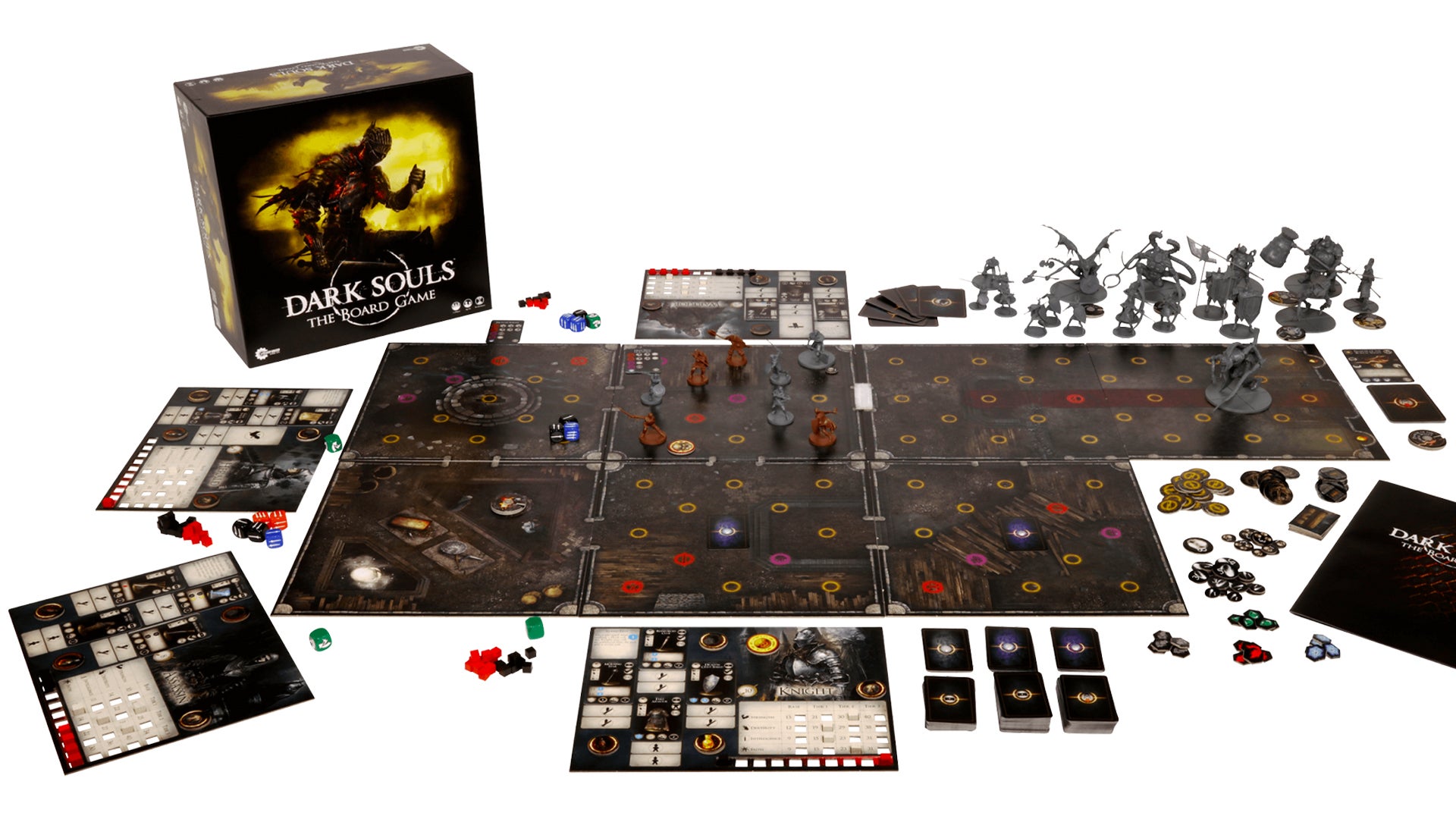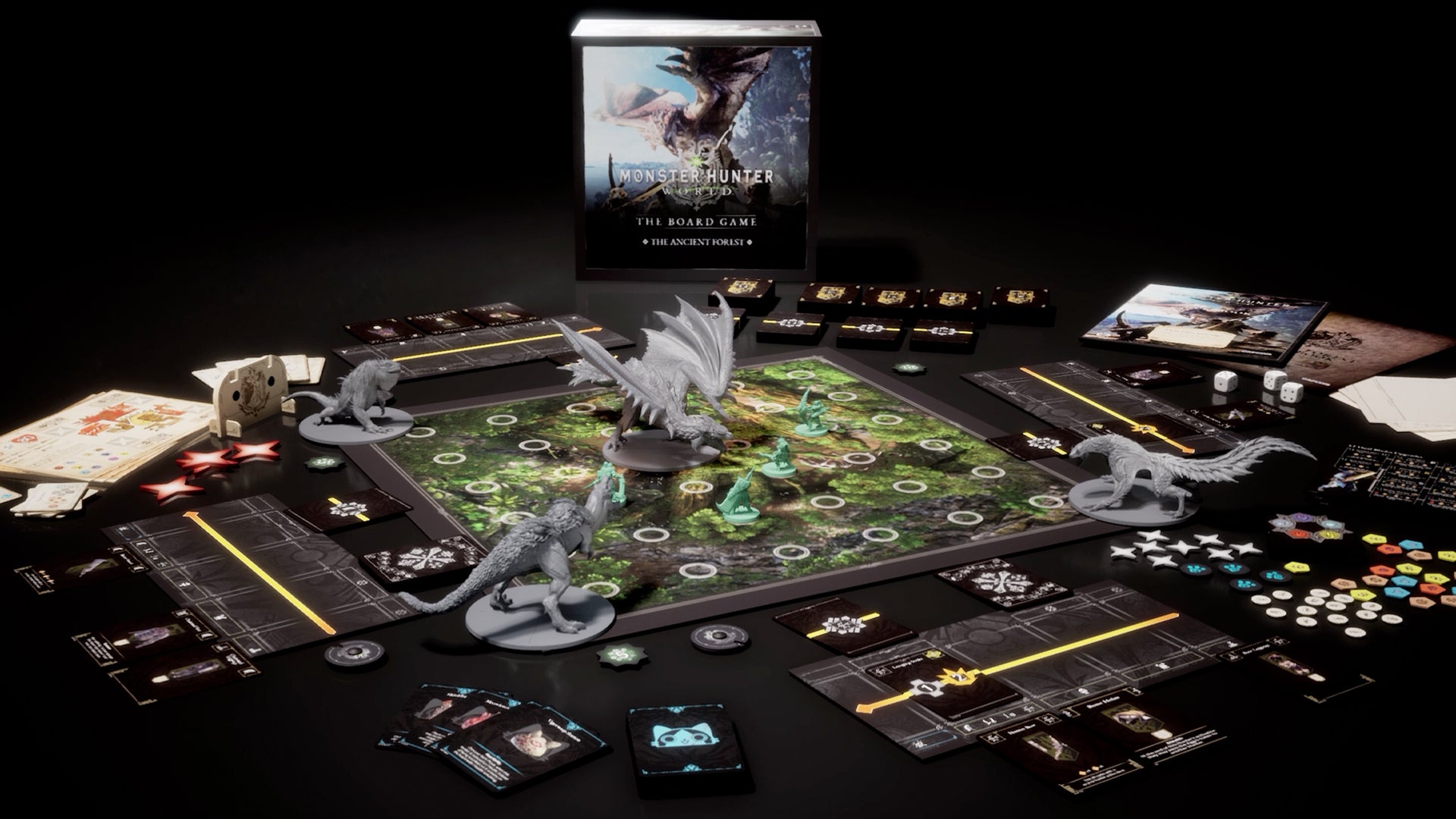Bad Game Design Monster Hunter World
Board games based on video games are a mixed bag, to say the least. There are some truly excellent ones, some utterly terrible ones, and some that muster nothing more or less than a middle-of-the-road "meh". Most fall into this latter category, impressing with flashy miniatures and familiar artwork, but falling apart when it comes to actually putting gameplay in motion.
The reason is simple: board games and video games are two different mediums, and play by different rules. Literally. What's fun to watch on screen and operate with controller buttons, keyboard or mouse can be unwieldy, clunky and excruciatingly convoluted when transformed into cardboard, tokens and dice. Video games are fun in part because the programming and code behind the scenes does the hard work for you, letting you enjoy the moment-to-moment challenge of quick reactions, correct button combos and menu management. Meanwhile, the best board games leverage an often simple core loop and combination of familiar mechanics, presenting you with the space to make strategic decisions, interact with the other players around the table and enjoy the tactile nature of pushing bits of wood and plastic around. There are exceptions to both, of course, but nobody wants to feel like a board game is playing them rather than the other way around.
The worst video game adaptations on the tabletop try to replicate the exact experience of their digital source in body but not soul.
The worst video game adaptations on the tabletop forget this key difference, trying to replicate the exact experience of their digital source in body but not soul. They might function like their namesake on paper, but in practice they're often exhausting to play, introducing endless small rules to simulate every last line of code that it then falls upon the players to . What takes seconds for a PC or console to calculate is stretched out to minutes of separate phases, turns and rounds. Forget frames per second, you may as well count frustrations per session.
Just as egregious is pasting familiar artwork over the top of tabletop mechanics that could be just as easily applied to any theme. If a board game doesn't feel like the video game you know and love, you may as well save yourself £50 and use your imagination - or stick on a Let's Play in the background while you play something more engaging.

For years, one of my go-to examples for a video game adaptation that missed the mark has been Dark Souls: The Board Game, the 2015 effort by Steamforged Games to turn the punishing action-RPG into a tabletop dungeon-crawler. While its deck-driven boss battles stood out as a clever way to bring the fight-die-repeat cycle of Dark Souls' fearsome foes to the tabletop - with the bosses progressing through distinct movesets that players could learn and overcome, just as in the video game - the build-up to each confrontation was a monotonous grind of earning souls, acquiring equipment and levelling-up that buried its highlights in hours of draining repetition. Where Dark Souls the video game was about solving its deadly puzzle two steps at a time - learning which corners you should turn carefully before a skeleton stuck a sword through you, and experiencing the satisfaction of getting one over on the game itself - Dark Souls: The Board Game's elements of random chance and lack of player control meant it was a frustrating, over-long slog. (Some fan-made rules have since made efforts to fix some its flaws, but my experience at launch was enough to put me off for good.)
Steamforged's announcement of a board game based on Monster Hunter World, then, put me in two minds. I have racked up thousands of hours across the long-running series of video games about slaying huge creatures to craft their body parts into ever-more impressive weapons and armour, in order to take down ever-bigger and fiercer beasties, from the basically-a-T-Rex Anjanath to the quite-literally-a-dragon Rathalos. The video games are notorious for being hard for newcomers to pick up as the result of their steep learning curve, slightly awkward control scheme and the need to invest dozens of hours to collect the crafting materials you need for each gear upgrade. At the same time, they're games into which it's easy to sink hundreds of hours, entranced by the satisfaction of watching the numbers get bigger and your armour get spikier/frillier/bluer/greener/more fire-resistant. Would a board game risk making those rough edges worse, and bury the joy of smacking a massive dinosaur with a comically large bone-sword?
Having recently had the chance to play a session of the upcoming board game for myself with developers Alex Hall and Jamie Perkins for a preview video on the Dicebreaker YouTube channel, I'm happy to say that Monster Hunter World: The Board Game is shaping up to be one of the better video game adaptations to hit the tabletop in years. (As a full disclaimer, our video playthrough was sponsored by Steamforged - this article is not sponsored or affiliated in any way.)
Monster Hunter World: TBG largely cuts to the chase of the video game, pitting up to four players against one of the game's various poster stars. In our demo over Tabletopia, we took on the Anjanath in the Ancient Forest biome, with our full party made up of hunters wielding a greatsword, bow, sword and shield, and dual blades. While we didn't get to experience the elements of the game designed to run across multiple sessions - including crafting and upgrading equipment - we were able to see how a full scenario plays out.
Monster Hunter World: The Board Game is shaping up to be one of the better video game adaptations to hit the tabletop in years.
One of the board game's more intriguing - and potentially controversial among some fans - changes to the video games' familiar setup is the reduction of tracking and hunting elements to a choose-your-own-adventure-style series of branching narrative choices at the beginning of each session. Rather than pursuing a monster through different zones and using clues to corner it, the players are given the chance to read short paragraphs of scene-setting descriptions and make decisions that affect the setup of their inevitable encounter with the selected foe. These can include which attacks the monster has at its disposal, as well as the players' health and any items and materials they discover along the way.
The format allows the board game to focus on the action of actually battling the beastie, although it remains to see whether the story segments become repetitive over multiple sessions in the same environments - something we couldn't tell from our demo. I found the section to be an interesting way to vary the setup and include elements of the video games that might've felt boring or drawn-out on the tabletop, but also felt that the narrative elements didn't necessarily feel especially memorable or significant. Again, that might have just been the decisions we made, which included falling into a cave, leaving us with a measly two hit points each by the time we found the Anjanath.

The most important thing is that swinging (or shooting, as the case may be) your weapon feels as satisfying as it does in the video game. Players programme their movements and attacks using a string of action cards from their hand, which allow them to reposition on the nodes around each monster's enormous 'miniature' and target weak spots - whether that's to dish out more damage through a less armoured section or eventually break a horn or tail for the required crafting material. Each weapon has a unique deck of abilities that make upgrading and changing your armament have an impact on the moves you can pull off, as well as making the fast-and-furious dual blades feel distinct from the slow but mighty greatsword. These are paired with a set of damage cards that are drawn after each attack, giving a slightly random result to how much damage you'll actually inflict. Like the attack cards, the possible damage numbers depend on your weapon; you might draw a greater number of relatively low-value cards with an agile combo-heavy weapon, or fewer big numbers with a single earth-shaking smash. The bow, meanwhile, powers up with various ammo coatings before blowing away with ranged strikes.
Learning the possible attack cards in your deck feels much like finding an effective button combo.
These decks of cards are where Monster Hunter World's devotion to the video games shines through. Over time, learning the possible attack cards in your deck feels much like finding an effective button combo, using your available stamina (how many cards you can play on your player board each turn) as effectively as possible to maximise damage and avoid getting flattened by a tail swing, roasted by flame breath or chomped by a fearsome set of gnashers. Familiarising yourself with your own attacks complements learning each monster's unique behaviour deck, too - finally giving the best part of Dark Souls: TBG its due - saving room on your stamina board to block or dodge out of the way before you hit zero HP and use up one of your group's limited lives. When it all comes together, it nails the standout moments of Monster Hunter - that sense of having complete control over where to position yourself, when to execute your powerful combo and what you're aiming to do. You work with your companions to overcome not just the toothed-and-clawed beast in front of you, but the invisible puzzle behind its every snap and swipe too.
Crucially, Monster Hunter World: TBG pulls off the illusion of feeling like the video game without just copy-pasting its code to cardboard. One of the best examples is the act of sharpening your weapon. In the video game, using a whetstone takes a precious number of seconds - more than enough to leave you exposed to finding yourself turned into a Diablos' dinner. At the same time, it's a vital act to ensure you're dealing enough damage to take down your foe; at worst, a blunted weapon will simply bounce off a hardened carapace. In the board game, sharpening is wrapped into the deck of damage cards. The damage deck doesn't automatically reshuffle, requiring a player to spend their turn 'preparing' to renew their weapons' potential high-value damage cards and optionally heal up with a limited potion. Combining the variable damage of weapons with the need to 'sharpen' once your highest-value cards have been drawn is a brilliantly efficient way to echo Monster Hunter's crucial moments of recovery without exhausting players with fiddly rules and endless individual components.
That was the lasting impression I took away from the time we spent with Monster Hunter World: The Board Game - this is a spin-off that understands the best adaptations capture the spirit of something rather than simply forcing the same exact formula into a new medium. While we won't know whether other key parts of the Monster Hunter series - including crafting shiny new armour and weapons with the materials you collect - are as successfully translated to the tabletop until we're able to play the board game's full campaign (which can stretch up to a whopping 70 hours), this first look indicates that we might be set for one of the best video game board games yet.
Monster Hunter World: The Board Game launches on Kickstarter on April 20th.
Bad Game Design Monster Hunter World
Source: https://www.dicebreaker.com/games/monster-hunter-world-the-board-game/feature/monster-hunter-world-board-game-adaptation-preview-impressions
Posted by: mejiaantum1964.blogspot.com

0 Response to "Bad Game Design Monster Hunter World"
Post a Comment